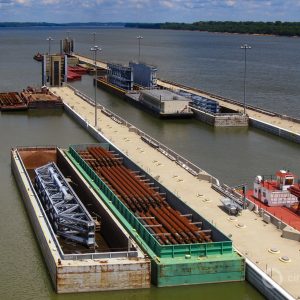The Stream, August 16: Watersheds Of Major Asian Rivers Threatened By Mining
The Global Rundown
Forests in the watersheds of the Mekong, Salween, and Yangtze rivers are disappearing due to illegal mining in China’s Yunnan province, a Greenpeace report found. Conservationists in Western Australia worry a proposed uranium mine could pollute water supplies. Tests show Canada’s North Saskatchewan River is now suitable for drinking water after an oil spill last month, but still poses risks for wildlife. Extensive monsoon flooding in Myanmar has affected nearly half a million people. Communities in Senegal hope early warning systems will help them prepare for severe and chronic floods.
“The difference with uranium is the risks are very, very high and when things go wrong, they go very wrong.” –Mia Pepper, nuclear free campaigner at the Conservation Council of Western Australia, on a proposed open-pit uranium mine in the state. The mine is opposed by the Pila Nguru Aboriginal community, and conservationists have raised concerns about possible water contamination. (Guardian)
By The Numbers
400,000 people Number in Myanmar who have been hit by monsoon floods, about a third of the number affected by severe and extensive flooding last year. Eight people have died. Reuters
115 animals Number that have died in Saskatchewan as the result of an oil spill into the North Saskatchewan River last month. Test results showed that the water is now meeting drinking water standards, but still exceeds guidelines meant to protect aquatic wildlife. CBC News
Science, Studies, And Reports
Illegal mining is destroying forests in China’s Three Parallel Rivers of Yunnan protected area, putting water quality and biodiversity at risk in the watershed that encompasses the Mekong, Salween, and Yangtze rivers, according to a report released by Greenpeace. The report asserts that 270,000 hectares of forest were lost in the region between 2000 and 2013. The Third Pole
On The Radar
Communities in Senegal are working to develop early warning systems to alert residents of extreme weather after a rash of severe floods destroyed homes and harvests. Other efforts to build flood resilience include an initiative to reforest land degraded by fire. Reuters
A news correspondent for Circle of Blue based out of Hawaii. She writes The Stream, Circle of Blue’s daily digest of international water news trends. Her interests include food security, ecology and the Great Lakes.
Contact Codi Kozacek




